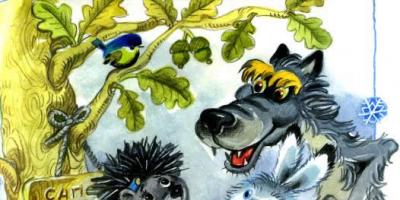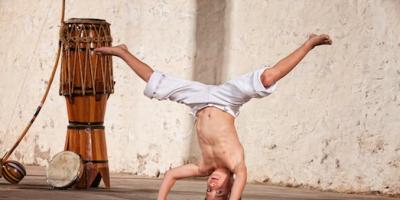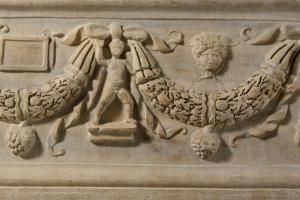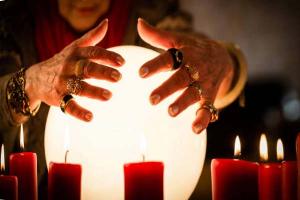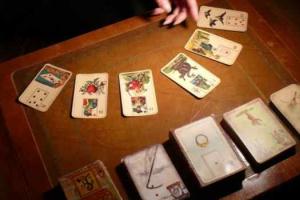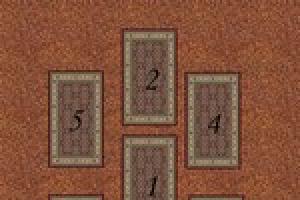Capoeira is not just a dance, but a real art. And everyone can master it, if, of course, they try and make an effort.
What it is?
Capoeira is the national martial art of Brazil, which combines elements of play, wrestling, dance and even acrobatics. All movements are performed to rhythmic Brazilian music, and the result is an amazing energetic mix!
It is worth noting that although elements of combat are present, contacts between partners are reduced to nothing, since low positions, simulated kicks, acrobatic techniques, as well as all kinds of sweeps predominate. But when one dancer supposedly attacks, the other dodges in every possible way, resulting in a stunningly beautiful duel. But to achieve this, all techniques must be harmonious and coordinated.
How did it appear?
The history of the appearance and development of capoeira dates back to the 18th century, but it is believed that it arose much earlier. If you believe the most widespread and generally accepted version, then this art originated in South America, thanks to black slaves brought by the Portuguese from the colonies of Guinea, Congo, Mozambique and Angola.
At that time they were treated extremely cruelly and were forced to flee. The fugitives organized entire free cities (quilombush), in which the vibrant and original African culture often collided with the more measured Indian one. And for fun and to keep fit, they danced. This is how capoeira was born.

There are different information about the origin of the first dances. So, some believe that they belong to the subculture of national African dances. Initially, there were no fighting techniques in capoeira. Others believe that the basis of the art was the African national martial dance “ngolo”, which was an integral part of the initiation rite in the southern regions of Angola.
The young warriors who entered into battle with each other portrayed zebras. One way or another, the origins of capoeira have always been associated with the name of the legendary hero Zumbi, who became a symbol of resistance for the Brazilian people.
As for the name, there are also several versions. According to one of them, from the Tupi Indian language it is translated as “a field overgrown with bushes and cleared by cutting down or burning.” Probably, the interpretation is relevant, because dance areas were needed, and they probably had to be cleared.
According to another version, in Portuguese “capoeira” means “chicken cage”. But there is a third version, and its adherents believe that the name is a distorted pronunciation of the words “kipula” and “kipura”, which can be translated from the Kikongo language as “fight” and “flutter from place to place.”
By the way, there was a time when capoeira was prohibited by law, and therefore for some time it went underground.
Styles
After the military coup that took place in Brazil in 1930 and completely changed the political situation, capoeira was recognized by law and began to develop more actively. And therefore, several branches appeared, each of which can be considered an independent direction.
So, the main known styles of capoeira:
- Capoeira Regional. In 1932, the first officially recognized capoeira school in history appeared, founded by Mestre Bimba (Manuel dos Reis Michado). And he created a new style, giving it the name “Luta Regional Baiana” or briefly “Capoeira Regional”. He managed to systematize the experience of previously existing illegal schools and improve teaching techniques. As a result, a special technique was developed. Whole sets of movements, attacks and counterattacks with legs also appeared.
- Capoeira Angola. The second important person in the history of the development of art was Mestre Pastinha (Vicente Ferreira Pastinha). He opened his school in 1941. And his style was named “Angola” in honor of the place from which the slaves who invented the dance were brought. Although this direction appeared later than Regional, it involved the use of the basics of art, that is, ligaments and movements characteristic of national African dances.
- Capoeira Contemporanea is a so-called mixed or universal style that combines elements of both Angola and Regional.
It is worth noting that it is very, very difficult to distinguish between styles, even for an experienced master, because some movements and elements are inherent in all directions, while others are constantly being improved.
Benefit

What are the benefits of training? Capoeira has many undeniable advantages:
- Exercising will help you get rid of excess weight and make your body more sculpted and attractive.
- Classes are useful for everyone: men, women and even children. And although some movements are difficult, capoeira is suitable even for people with virtually no physical training.
- Your body will become flexible, because capoeira contains stretching exercises.
- Exercise is good for health; it improves the functioning of the cardiovascular, respiratory and other systems.
- Coordination improves, memory and logical thinking are trained, because every movement must be thoughtful and planned.
- It's just fun and enjoyable! You will see, after class you will feel a surge of energy, and your mood will improve.
- It's not very expensive. Lessons cost about the same as other sports.
- No additional devices are required, no equipment is needed. You can exercise anywhere at any time.
- Capoeira means new and interesting acquaintances!
There are very few cons. These include a small number of vocational schools, as well as the danger of some movements.
How are the training sessions going?
It’s worth noting right away that all lessons are held very energetically, at a fairly fast pace. The movements are performed to the accompaniment of national Brazilian music; sometimes musicians playing national musical instruments are invited (although rhythmic modern compositions can also be selected).
The training includes many wrestling techniques, dance steps and even acrobatic tricks (these can only be performed by experienced capoeiristas). The game, which is played remotely and excludes any direct and close contact between the dancers, includes a whole arsenal of movements, such as various supports, sweeps, throws, jumps, and elements of defense.

When one partner attacks, the other defends. As a result, the dance should look harmonious and at the same time dynamic, so that all elements are performed quite quickly.
First, the coach helps you master the basic elements; they are the basis of capoeira. Then they are connected into whole bundles and chains. Then the game with a partner, interaction with him in dynamics is worked out.
What do you need to start classes?
To start studying fully, you should first find a suitable school and enroll in it. Unfortunately, there are not many professional and experienced trainers, and capoeira is often taught in fitness centers and presented as a fitness direction.
You will need little for training. Firstly, it's your attitude. Be prepared to give it your all and work hard. Secondly, these are clothes. It is not necessary to purchase a special uniform; any loose items will do. And you can give up shoes altogether; it’s much more convenient to exercise without them.
Start training and master this art!
Capoeira is the name of an Afro-Brazilian martial art that combines elements of dance, acting and acrobatics, accompanied by the rhythm of traditional Brazilian musical instruments. Mainly in capoeira (capoeira) the technique of using the legs is used.
The etymology of this word is not reliably known. There are a number of different interpretations, of which the researcher’s version seems to be the most likely Phu Kiaw Bunseki. He suggests that it is a corruption of a Kikongo word meaning "to flit from place to place" as well as "to hit or fight." Both words are used to describe the movements of a rooster during cockfighting. " Kipura in the cultural context of the Kongo people also means a person who imitates the movements of a rooster during cockfighting..."
There are several different versions regarding the history of this branch of martial arts. In the 17th century, fierce colonial wars took place in Brazil. African slaves, whom the Portuguese brought from the colonies of Angola, Mozambique, Guinea and Cogngo, ran away from slave owners to the jungle and created free communities there ( Quilombos). Attacks on Quilombos were a regular occurrence, and their inhabitants needed to develop a system of self-defense. It is believed that it was then that the prototype of capoeira was transmitted to the inhabitants of Quilombos by the Indians of the South American continent.
According to another version, capoeira was originally an African ritual initiation dance, which was later assimilated under the influence of the Indians of South America and shifted its emphasis to martial art.
Sometime in the early 1800s. Capoeira went beyond Quilombos and began to be used by street groups of various ethnic gangs.
Modern capoeira, unlike earlier forms, is rarely used for combat purposes. As a rule, these are non-contact fights, however, full contact fights are also held at world championships. Traditions determine the appearance of the participants, the music and the procedure for passing certification, in general - the entire course of meetings.
The first official capoeira school, founded by Mestre Bimba (Manuel dos Reis Machado), was opened in 1932. Mestre Bimba created a new style of capoeira and called it "Luta Regional Baiana" (Luta Regional Baiana), a more common name "Capoeira Regional"" ("Regional"). Thanks to the systematization of the experience of various schools and the improvement of teaching techniques, as well as the development of teaching methods and blow complexes, Mestre Bimba's capoeira is a completely unique and new approach to the theory and practice of this martial arts. Mestre Bimba developed the "8 sequences of Bimba" ("sequences "), which are still considered the ABC of training for capoeiristas practicing regional and some other areas of modern capoeira.
Another influential figure in the art of capoeira was Mestre Pastinha(Vicente Ferreira Pastinha), founder Academy"Capoeira Angola", opened by him in 1941. His style of capoeira is called "Angola". The difference from the regional style is that importance is attached not so much to the combat aspect of capoeira as to the traditional ritual playing nature. Between these two directions there is a serious difference both in the speed and method of performing the technique, and in the general nature of the direction of the game. If regional puts emphasis on speed and quick reflexes, Angola attaches great importance to the meaningfulness of every movement.
However, there are supporters of a unified capoeira (capoeira "Contemporanea"), not contrasting these two techniques, but using the advantages of each of them in the game.
Regional and Contemporanea have adopted a system of belts, the colors of which indicate skill and are determined by each individual school. The belt can only be obtained at initiation ( batizado / batizado). Together with the practice of the game, as well as the development of movement elements, the Portuguese language, culture, music, songs, philosophy and history of capoeira are studied. Experienced Apprentice Title ( formado) is given after several years of constant training. The next level is considered to be a contra mestre teacher's assistant ( contra-mestre), and the title of Mestre ( mestre) makes it possible to open your own school. It usually takes at least ten years to achieve this rank.
In the tradition of most schools of the Angola direction, the batizadu ritual and the belt system are not practiced.
Capoeirista meetings take place according to certain rules: the musicians who set the rhythm of the game stand at the head of the circle (the so-called Rhoda/Roda). The composition of the Roda is formed by the capoeiristas themselves and the audience, located in a circle. Rhoda sings songs in Portuguese. The game itself takes place in the center, in which players, using jumps and punches, try to reach their opponent and force him to fall. The nature of the game in Rod (friendly or aggressive), its tempo (fast or slow) completely depend on the rhythm being set. Capoeira does not practice static poses; its basis is ginga ( ginga) - continuous movements of players.
Today, capoeira schools unite many people all over the world. Capoeira festivals and seminars are held regularly in different countries.
Modern capoeira is a spectacular performance that makes an indelible impression, a game in which stunning acrobatic stunts are combined with combat strikes of amazing beauty and power.
During training at a capoeira school, you can lose excess weight, get a great stretch and build up your muscles. Modern hip-hop, breakdancing and such incendiary Latin American music originate from the art of capoeira. There are practically no restrictions on age and abilities; almost anyone can start classes. They say that the art of capoeira teaches you to fly not only above the ground, but also above yourself.
History of capoeira
Reliable information about capoeira begins in the 18th century, but, in fact, it originated somewhat earlier. According to the generally accepted version, capoeira originated in South America thanks to black slaves whom the Portuguese brought from other colonies - Angola, Mozambique, Guinea, Congo. As a result of the cruel treatment of Brazilian slave owners, some slaves fled to the jungle, where African religion and culture met Indian. The fugitives settled in quilombos (singular - quilombu) - “free cities”, from the subculture of which capoeira began to spread.
According to various sources, capoeira originates from:
- subcultures of African national dance. Initially, it did not carry a combat aspect, which appeared later, on the territory of Brazil.
- African ritual war dance “ngolo” (“n’golo”), which was an integral attribute of the initiation rite in the southern regions of Angola, and depicted the dance of zebras - young warriors entered into a ritual battle with each other.
However, despite the different versions, the qualities of dance in capoeira are present.
The development of capoeira at that time is inextricably linked with the legendary hero - Zumbi, who became a symbol of resistance for the people of Brazil. Zumbi dos Palmaris (port. Zumbi dos Palmares) headed one of the largest quilombos - Palmaris, which existed under government blockade for about seventy years.
origin of name
Disputes regarding the etymology of the word “capoeira” continue to this day. The most common versions:
Capoeira underground
A new stage in the development of capoeira was the official documentation of information relating to capoeira. This period begins with the signing in the city of Brazil Golden Law who abolished slavery. It should be noted that the import of slaves was prohibited even earlier - in the city - by the Queiroz law, but for almost another forty years the slave trade continued illegally, until May 13, 1888. On that day, Princess Isabella, who ruled at that time in place of the sick emperor, signed the following law:
Despite the official equalization of all Indians, blacks and mestizos in human rights with Europeans, social discrimination still existed in the country, manifested in all spheres of social life. The religion of Candomblé and capoeira, like many other elements of the culture of the non-European population of Brazil, were officially banned. Social reflection on this fact was the so-called. “Resistance” - capoeira became both a dance and a weapon among underground groups and street gangs. In the city, the practice of capoeira was prohibited by the first constitution of the Brazilian Republic.
Style separation
Capoeira Regional
Quite prominent representatives of the Angola Capoeira style are:
Capoeira Contemporanea
The term "Contemporanea" is used for groups who practice the Angola style while modernizing it. This style is very controversial, as many modern capoeiristas argue that the Angola and Regional styles should not be mixed, and that the student must practice only one of them in order to fully accept the form of the game. Others argue that a capoeirista should be skilled in both traditional and modern capoeira and advocate training in both styles simultaneously. In general, the Contemporanea style is the subject of much debate among capoeiristas.
The name "Contemporanea" is also applied to various groups that do not associate themselves with either Mestre Bimba or Mestre Pastinha.
Over the past few years, the different philosophies of modern capoeira have been expressed in the creation of various schools, particularly in North America, which create and continue to develop their own school of modern art. This has become a defining characteristic of many schools, to the point that an experienced student can sometimes tell which school his opponent comes from just by the capoeirista's playing style. Some schools teach mixed media, which is based on a combination of several styles. Traditionally, the birth in these schools begins with the Angola style, during which the Mestre or an experienced student sings the ladainha (which can usually be heard at the beginning of the game in Capoeira Angola). After some time, the game speeds up and soon the Mestre gives a sign, after which the berimbau rhythms become traditional for the Regional style.
Each of the styles, Regional and Angola, focuses on different properties and key points. Regional focuses on developing speed and quick reflexes, while Angola emphasizes the deep meaning of each movement, almost like a game of chess. Schools that teach a combination of both teach it as an opportunity to use the strengths of each in your game.
Spread of capoeira around the world
Capoeira in Europe
Europe's first close acquaintance with capoeira dates back to 1951 - the European tour of the artistic troupe Companhia Brasiliana, followed by others - for example Furacões da Bahia or Brazil Tropical, based master Camisa Rocha. After this, individual specialists were given the opportunity to stay in Europe for a long time, teaching capoeira or performing solo performances. Considered the pioneer of European capoeira Martinho Fiuza, who came to the city. It should be noted that regular teaching of capoeira in the USA began only three years earlier - in the city by a master Jelon Vieira(school Senzala) in NYC . Paulo Siqueira arrived in Germany ( Paulo Siqueira), this event is considered to be the beginning of the continuous development of capoeira in Europe.
Capoeira in the CIS
The first serious interest in this type of art in Russia and the CIS was shown in the city, after the release of the film “Only the Strongest”, with Mark Dacascos in the title role.
The situation due to the lack of information began to change when capoeiristas from the CIS countries began to attend capoeira training camps and seminars in Europe, the USA and Brazil.
The next stage in the development of domestic capoeira was the visits of Brazilian masters. Every year many famous Brazilian capoeira masters come to the CIS with a program of seminars, and, as a rule, they are really interested in the development of capoeira groups in Russia and the CIS.
Capoeira in Russia
Capoeira today
Capoeirista meetings
Meetings between capoeiristas, in the vast majority of cases, are held according to the following rules. The musicians stand at the head of the circle (port. Roda). The roda is formed by capoeiristas or the audience standing or sitting in a circle. Everyone sings songs in Portuguese. The two enter the game near the location of the musician with Gunga, called Pe do Berimbau (port. Pe do Berimbau), sometimes using acrobatic elements. The game begins - movements, strikes, jumps alternate in attempts to reach the opponent or force him to fall. The nature of the game in Roda (fast or slow, friendly or aggressive) depends on the rhythm that the berimbau plays and the songs.
Music
“The ability to sing and respond... is the responsibility of every capoeirista. The inability to sing solo is not a defect, but the inability to sing along with the choir is a big disadvantage. There should not be people in the bateria who do not sing with the choir.”
“Why do songs have a plot?.. ...So that when a representative of another group or a master comes to the clan, improvisation would warn the clan whether it needs to stop, or encourage them to continue playing.”
Training and activities take place to the accompaniment of live music, which is created by a special “capoeira orchestra” - bateria (or sharanga). There are several traditions of bateria composition, they are quite diverse.
The main role in the accompaniment and management of labor is played by Berimbau(port. Berimbau) - an instrument resembling a bow with a resonator. Berimbau sets the basic rhythm and tempo of the game in Roda.
A more or less generally accepted tradition is that the basis of the bateria is three berimbau, each of which serves its own purpose:
In addition to berimbau, the “classic” bateria includes:
Berimbau rhythms

Three main types of berimbau
The rhythm of the berimbau determines the nature of the game in Roda; there are many popular traditional and “author” rhythms for this instrument, for example:
There are other rhythms, described in more detail in the main article of the section.
Songs
In traditional capoeira, the song cycle is divided into three main parts:
The musical sequence opens with the ladainha, a traditional solo song by the mestre (or the person who “leads” the family). The singer may tell a parable or convey a message to the audience. The solo can be improvised. While the master sings, the first pair of players sit and wait, positioned on either side of him.
General concepts and definitions in capoeira
- port. Abada/ Abada - special white capoeirista pants.
- port. Amazonia/ Amazonia is a style of playing capoeira; when playing in this style, capoeiristas imitate the movements of animals, using mainly the lower technique.
- port. Angola/ Angola - capoeira style of play, characterized by a special rhythm of playing the berimbau, in roda they play very close and slowly.
- port. Apelido/ Apelidou is a name in capoeira, given to the mestre before the batizada.
- port. Axé/ Ashe - the energy of capoeira.
- port. Bateria/ Bateria - the orchestra, the instruments and the people playing them, they set the pace of the game.
- port. Batizado/ Batizadu - initiation ceremony, baptism, receiving the first cord.
- port. Benguela/ Benguela is a style of playing capoeira, characterized by a special rhythm of playing the berimbau, the style is dominated by departures, movements, the rhythm is average, the blows are smooth and not high.
- port. Volta ao mundo/ Volta au mundu - a walk in a circle, used for a break for players or musicians.
- port. Grimas/ Grimash - sticks for makulele.
- port. Jogo/ Jogu is a game of sorts.
- port. Jogo de compra/ Jogu di compra is a game in which one person comes out in a family and replaces the one who plays longer.
- port. Iuna/ Iuna is a style of playing capoeira, characterized by a special rhythm of playing the berimbau, acrobatics predominate in the roda, they play at a distance so as not to interfere with each other.
- port. Corda/ Corda - a colored cord indicating the status of a capoeirista, worn on the belt.
- port. Corridos, quadros/ Curridus, cuadrus - songs performed by the participants of the roda.
- port. Ladainha/ Ladainha - introductory song, sung only in Angola, performed solo.
- port. Maculelê/ Makulele - dance-game with sticks, participants perform various movements, falling into the rhythm set by the drums.
- port. Regional/ Regional - style of playing capoeira, characterized by a special rhythm of playing the berimbau, the roda is played quickly, high and fast strikes predominate, you can do jumps and acrobatics.
- port. Roda/ Roda - a circle formed by participants in which capoeiristas play.
- port. Solo/ Solo - a single performance by a capoeirista, with or without rode, in which he shows his ability to perform some kind of strikes, connections, acrobatic movements.
- port. Toque/ Toke - rhythm of playing the berimbau.
- port. Troca de corda/ Troka di cord - change cord, move to the next level.
- port. Chamada/ Shamada - a call, a certain sequence of steps and actions, used exclusively in Angola for a break or to change the course of the game.
- port. Chulas/ Shulas is a song of praise, sung only in Angola.
Movements and Strikes
There are no static stances in capoeira. Its basis is ginga (port. ginga). Ginga is a continuous movement, the player is constantly moving, ready to escape the blow or carry out the blow himself. Main stands and movements:
- Ginga (port. Ginga).
- Negachiva (port. Negativa).
- Eshkiva (port. Esquiva).
- Cocorinha (port. Cocorinha).
- Roles (port. Role).
Handstands and movements:
- Au abertu (port. Au aberto)
- Au feshadu (port. Au fechado).
- Oh good luck (port. Au goodness).
- Au agulya (port. Au agulha).
- Bananeira (port. Bananeira).
- Biku di papagayu (port. Bico de papagaio).
- Macaque (port. Macaco).
The names of the movements vary from school to school; the terms given above are characteristic of certain schools of the Regional and Capoeira Contemporanea directions. The same names in other schools may mean slightly different movements.
Gradations of skill
In modern capoeira directions regional And contemporary to indicate skill, a system of belts or scarves is adopted, the colors of which are determined by each individual school. Belts (port. cordão) or neck scarves (port. lenço) are colored scarf cords worn by capoeiristas. They can receive their degree, apelida (and scarf belt) only at the initiation ceremony (port. batizado). Along with practice in roda and practicing new elements, the student learns the Portuguese language, music, songs, the history of capoeira and its philosophy. With perseverance and constant training, after a few years you can achieve the title of an experienced student (port. formado). The next level allows you to help your teacher. The highest ranks are Mestre Xarangeiro (port. mestre-xarangeiro) contra-mestre (port. contra-mestre) and Mestre (port. mestre). The title of Mestre allows you to open your own school; achieving this title takes at least ten years.
In the tradition of most schools of the direction Angola issuing belts and conducting batizada is not practiced.
Batizado
Initiation into capoeirista, when a newcomer can be given a name (“apelida”) and the first cordao. In capoeira there is no traditional change to a belt according to standards as in other martial arts; readiness to change the belt is determined by the coach based on the results of training for the entire time. If a player is called into the circle for a batizada, we can assume that he has an increase in the gradation of belts, unless he makes “loud mistakes” or shows basic ignorance of the rules of entry into the family. The ceremony is held differently in different schools; usually a capoeirist of at least the level of “professor” has the right to conduct a batizada. The ceremony for changing the belt (degree) is called “Troca di cordao” (port. Troca de Cordao) and is usually carried out together with batizada.
Organization of the capoeirista movement
Capoeira schools now unite tens of thousands of people around the world. Festivals and seminars are held regularly.
A school is determined by its affiliation with one of the capoeira styles. Typically, each school has a base location and many branches around the world. The Mestre (or his disciples) regularly visits the branches and conducts batizada. There are many internationally recognized and respected schools, as well as little-known ones.
However, it is certainly necessary to take into account the following opinions:
“...Capoeira is like air: we know that it exists, we breathe it, we cannot live without it. And at the same time, we cannot catch it, put it in some kind of framework. Capoeira cannot be limited to just one single group of practitioners, one single formal organization, and especially not one group of masters who claim a monopoly on its ownership. Capoeira goes beyond all of us. No society, group or person will ever control it...
...Before thinking about creating a capoeira institution, we must ask ourselves: why would anyone want to organize us? Why do we need an organization that will control our way of life? Who will benefit from this? Capoeira? Capoeira player? Bureaucrats? Is the creation of such organizations really necessary?...
…we are open to learning about capoeira, but we don’t want anyone to impose their own scale of values on us. We want a community that values and encourages both the individuality of each member and the collaboration between them...” - Mestre Cobra Mansa
Thus, it can be seen that there are two main trends: maximum organization and maximum freedom. And, of course, there are as many opinions as you like between these poles. Each group, association of capoeiristas, or individual who does not have a strong connection with a specific group chooses its own path. However, here another principle comes into play - following the “line” - a tradition passed on from teacher to student.
Capoeira in films, videos, commercials and computer games
Modern capoeira includes many spectacular acrobatic jumps, tricks and movements. A game that combines powerful blows with dizzying acrobatics can make a strong impression on an outside observer. It is natural that capoeira did not go unnoticed by Hollywood directors.
Only the strong
The first feature film entirely dedicated to capoeira.
Other games
In addition to the game "Capoeira Fighter", made by enthusiasts, there are many commercial games in which capoeira is present in one form or another. Games of this kind include such titles as “Tekken” (episodes from 3 and up: Eddie Gordo, Tiger, Christy Monteiro), Prince of Persia (The Sands of Time; WW; TTT), “Fatal Fury” (FF1 , 3, Real Bout 1, 2, Special), “The King of Fighters” (KoF: MI 1, KoF: MI2, KoF 11), “Street Fighter 3” (all versions), Rage of the Dragons. The matter is not limited to the games listed, and not all games present capoeira specifically as a combat discipline. For example, in the online role-playing game World of Warcraft, trolls, after commanding to dance (/dance), begin to perform capoeira movements.
Notes
- Health"snews.com Capoeira - is it appropriate for a gentleman? ,
- Health"snews.com Capoeira – The main thing is stretching,
- ISBN 5-93347-205-0.
- Article Quilombush - free cities on v8mag.ru
- Capoeira Angola: collection of articles. M., Rusaki, 2005., ISBN 5-93347-205-0. Daniel Dawson, article “Capoeira Angola and Mestre Joao Grandi”, English.
- Capoeira Angola: collection of articles. M., Rusaki, 2005., ISBN 5-93347-205-0. page 22
- Article CAPOEIRA: BRAZILIAN WAR DANCE on idance.ru
- Capoeira during this period is described in more detail in Jorge Amado’s book “The Shop of Miracles”
- Mestre Bimba
- Capoeira Angola: collection of articles. M., Rusaki, 2005., ISBN 5-93347-205-0. Article "Capoeira Angola", Martin de Moor.
- “GRUPOS PARAFOLCLÓRICOS BAIANOS. Olhar o passado e entender o presente para redimensionar o futuro» Nadir Nóbrega Oliveira (port.)
- Mestre de Capoeira Paulo Siqueira (German)
- “Herança de Pastinha. Metafísica da Capoeira.” Decanio, Ângelo; Colecão São Salomão 3, Salvador: Produção Independente, 1996., p. 38, p. 54
“You learn to play in kind, you learn to play in life.” Mestre Corba Mansa
The magic word "capoeira"
Capoeira Regional- a game of strength and speed. This style was developed by Mestre Bimba at the beginning of the 20th century. It prioritizes quick strikes, high speed, sweeps and throws. The founder wanted to make capoeira more effective so that his followers could apply their skills in fights with representatives of various martial arts. He was the first to introduce the gradation of students (based on the color of the scarves around their necks) and the ceremony of awarding belts: “batizada” - initiation and “formatura” - graduation of students.
Mestre Bimba was an outstanding fighter. His nickname was “three strikes” because he had them to defeat any opponent. He prepared his students to win any battle. Bimba consciously and under strict control introduced aggression into the educational process of his students. He believed that it was better to show his strength within the walls of the academy than on the street.
Capoeira mujinho- a game of dexterity and interaction. This style was developed by Mestre Suassuna. He noticed that capoeiristas began to forget traditions, partners played too far from each other. It took Suassuna over 16 years to create techniques and drills that combine the technique and expression of Angola (close play) with the speed and dynamics of Regional. In mujinho, players close together in a small circle show off their dynamic play. The blows are not applied to contact.
Capoeira contemporary- modern capoeira, which combines the traditions of Angola and Regionala and acrobatics.
Features of modern capoeira (based on materials from the Moscow school “Real Capoeira”)
 Game in a circle (sort of)
Game in a circle (sort of)
Everything that modern capoeiristas learn in training is done in order to apply it in roda. Capoeiristas form a circle. In the center there is a battery of students or masters playing musical instruments. After two players hear the sound of the berimbao, they shake hands and begin to play. Then the third player buys out one of the players, and the game starts again. In the circle, capoeiristas always do ginga - a basic step, strikes, throws, movements, sweeps and acrobatics.
Music
This is an integral part of capoeira. She is able to set the rhythm and make the game meaningful. Masters, with the help of songs and music, tell some instructive story, celebrate an unusual game or an interesting moment during childbirth. The game must include a berimbao (a one-stringed musical instrument consisting of a wooden bow, a metal string and a gourd that serves as a sound amplifier), a pandeiro (tambourine), an atabaque (a large drum), an agogo (a bell), a reku-reku (a hollow stick with parallel cuts, the sound is produced by rubbing a thin stick along the grooves to produce a ratchet).
Dance
Some modern capoeira masters pay special attention to dance in their classes. They believe that this is a necessary condition for the rhythmic and harmonious interaction of two capoeiristas. Movements should not be cut off from each other, but flow smoothly from one another. To achieve this, modern capoeiristas optionally attend samba, afro, maculele, forro and many others classes.
Acrobatics.
After six months to a year of training, any beginner can perform simple acrobatics - a wheel, a bridge, handstands. But greasy and other tricks must be mastered separately. This is an optional, but very interesting part of the training. It is used in demonstration performances.
 Belts
Belts
Initiation (batizado) is carried out for those who have been practicing regularly for more than six months and have an understanding of the basic blows and departures. The master conducts a “baptism of fire” and gives the first belt. In the future, every year students receive new belts, learn new movements, and participate in seminars. After completing the instructor course, some begin teaching.
The belt is not the main goal of a capoeirista; one might even say that it is given in advance so that the student has the motivation to grow. True, this does not apply to senior belts. They are issued for certain services to the school - participation in show programs, regular trips, teaching, in general, for an active life within the school.
Capoeira cannot become outdated or boring. She's too versatile. New songs, new rhythms, new meetings. The main thing is to find your balance between spontaneity and predictability, training and parties, flexibility and strength. The main requirement is the desire to develop. Capoeira never limits anyone. After all, her main goal and idea is the desire for freedom.
Photo source (5), (6) vk.com/realcapoeira
Capoeira today is an art form that is protected by UNESCO. Although in its early days capoeira was considered a martial sport, today it is a mesmerizing mixture of dance, acrobatics and non-contact combat.
Capoeira: the emergence of a tradition
Around the 18th century, capoeira originated in South America. She appeared on the continent along with black slaves. Sometimes slaves managed to escape from their tormentors. They reached free Indian villages and trained there to be able to repel the whites.

According to another version, slaves studied martial arts in secret from their masters, covering their lessons with ordinary dancing. However, capoeira has the following components:
- African dance culture;
- Elements of the war dance "ngolo".
The first hero of capoeiri in our time is Zumbi dos Palmaris. This black figure was in opposition to the Brazilian government for a long time, so people idolized him. Zumbi was also an excellent capoeira dancer.
In 1888, slavery was banned at the government level in Brazil. For a long time, slaves were kept illegally, then slavery was completely eradicated. Former slaves sometimes formed groups and took revenge on white people. Therefore, in the first constitution of the Brazilian state, capoeira was considered a weapon and was banned.
In 1930, a military coup took place in unstable Brazil. This gave capoeira a more legitimate position. Two years later, the first official school of this style opened in the country. Its founder was Mestre Pastinha.
Where does the dance get its name?
Among the Guarani Indians, the term "capoeira" means "a field that is cleared by annealing and cutting." It is possible that the fugitive slaves borrowed a metaphor from the Indians to describe their martial art.
A similar word is translated from Portuguese as “chicken cage.” In the Kikongo language, this word means "to fight", which directly refers to the past use of capoeira.
Styles and schools of capoeira
There are many schools of this fancy and fast dance in the world. Each founder brought something of his own to the style, making it different from others. Now capoeira is popular in many countries. Its first schools had the following distinctive features:
- Capoeira Regional. An improved version that combines techniques from different directions. Founder – Mestre Bimba;
- Capoeira "Angola". The style is closest to the dances of African slaves and is considered a traditional direction;
- Capoeira "Contemporanea". A new type of capoeira, where “Angola” and “Regional” are mixed with each other.
Today, this movement not only has an unusual history, but is also performed to absolutely original music. Live accompaniment involves the use of a berimbau, which looks like a bow and a resonator included with it. Playing the instrument is also accompanied by folk songs: ladanya, shula and corridos.
The introduction to a song may resemble a parable or a story. Then the rhythm speeds up. Usually, the first song is sung by the master himself, while the dancers simply sit opposite each other.
Movements in capoeira
There are quite a few masters in the world who are able to use the contact form of capoeira. Basically, the dance uses a non-contact method of combat. All movements are performed as low as possible to the ground, flips in the air and other acrobatic studies are used.

Jinga in this dance is called continuous movement. You can’t stand still, you need to do handstands, imitate kicks, all this happens to the music, so you need to get in time.
The skill of athletes is assessed according to a special system, where for the purest performance you can receive a scarf of a certain color. First, an initiation ceremony is held for the newcomer. He is then awarded the degree of "apelid". Then you can reach the “formado” level. Afterwards, you can help the master if you already have the “mestre-sharangeiro” level. Next come the titles “contra-mestre” and “mestre”. These are the highest levels, after passing which you can open your own educational center.
The Angola school does not practice assigning ranks, and there is no initiation there either.
But in any style of this dance there is a load on the body, muscle stretching, endurance exercises, coordination training and the ability to stand up for oneself.
This system contributes to the comprehensive physical development of the dancer. But they also remember the spiritual path in capoeira. To develop the soul, dancers learn Portuguese songs, study special philosophy, history and useful parables.
Disadvantages and advantages of capoeira
Outside of Brazil and Portugal, it is difficult to buy uniforms for classes. In addition, in Europe there are few masters who can truly teach this craft.

Another disadvantage of this sport can be considered the conditions for obtaining the next rank. Here you need not only to know all the movements, but also to sing and play musical instruments.
Flexibility is an excellent advantage for a dancer, but if nature has deprived you of this quality, you will have to practice additionally. And traveling around the world is not cheap. All of the above can be attributed to the disadvantages of capoeira.
Its advantages include excellent physical fitness of dancers, increased self-esteem, development of communication skills, communication with like-minded people, and the drive from the dance itself.
There is no aggression in modern capoeira. This martial art is considered the most peaceful. Capoeira is played specifically, since many styles and aspects are mixed in this direction.
Capoeira is a family sport where age and size do not matter. Thanks to the calm styles, both older people and young children can participate in this genre. Capoeira is a whole world for those who are interested in it. After all, they have their own rules, traditions and common interests. Experts say that capoeira combines fitness, cardio, stretching and strength exercises. It seems ideal and very fiery, so every year this martial art has more and more adherents.

